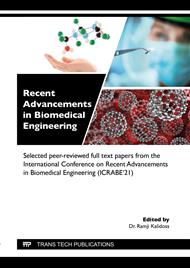p.59
p.67
p.73
p.79
p.85
p.91
p.97
p.105
p.111
Green Synthesized Carbon Quantum Dots from Curcuma Longa for Ascorbic Acid Detection
Abstract:
In this study, we developed a carbon-dot-based sensor, which is particularly sensitive to ascorbic acid. It was possible to generate carbon dots (CDs) by utilising a renewable resource: Curcuma longa, which is abundantly available. The carbon dots produced from curcuma longa have particle diameters of 0.6 nm and are extremely brilliant in appearance. It has been proven that the fluorescence of carbon dots is inhibited in the presence of dopamine and ascorbic acid, with dopamine being more sensitive to the fluorescence than ascorbic acid. There were no significant differences between the minimal detection limits for dopamine and ascorbic acid, which were 33 μM, respectively. The Stern-Volmer plot was used to establish the quenching of ascorbic acid. It is one of the potential technique for sensing ascorbic acid.
Info:
Periodical:
Pages:
97-101
Citation:
Online since:
August 2022
Keywords:
Price:
Сopyright:
© 2022 Trans Tech Publications Ltd. All Rights Reserved
Share:
Citation:



